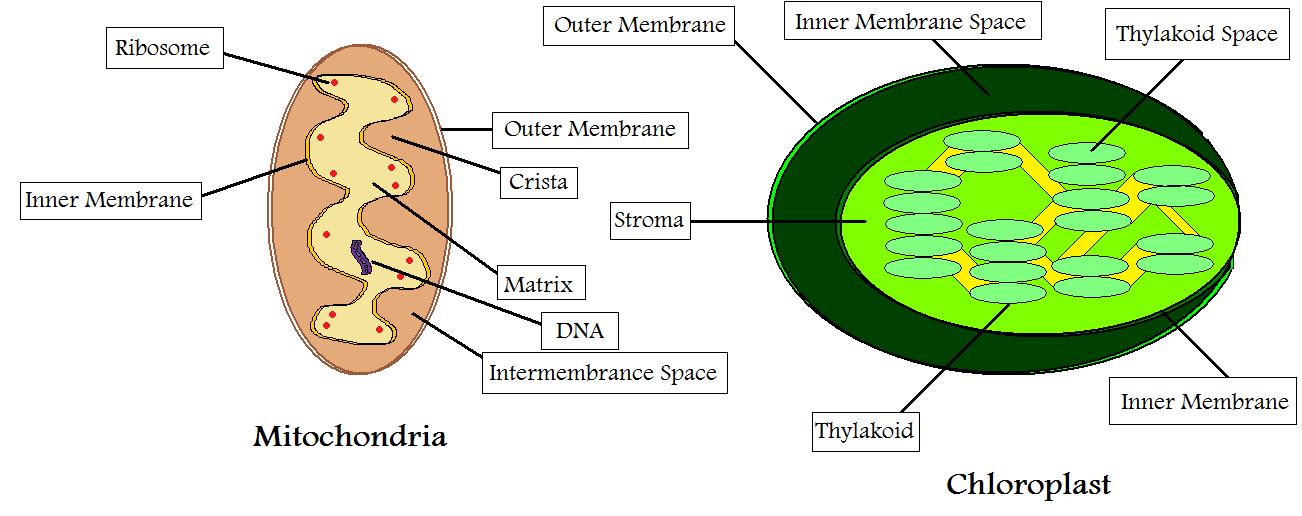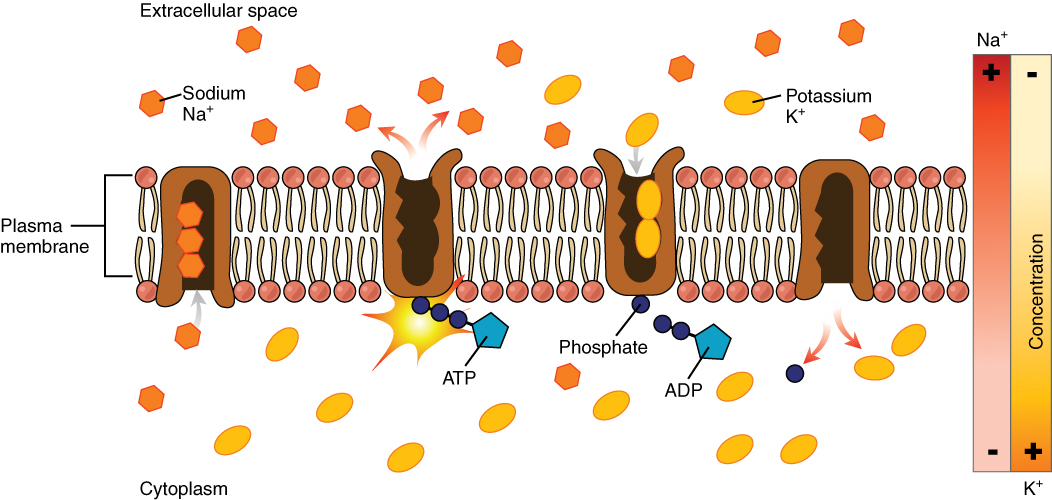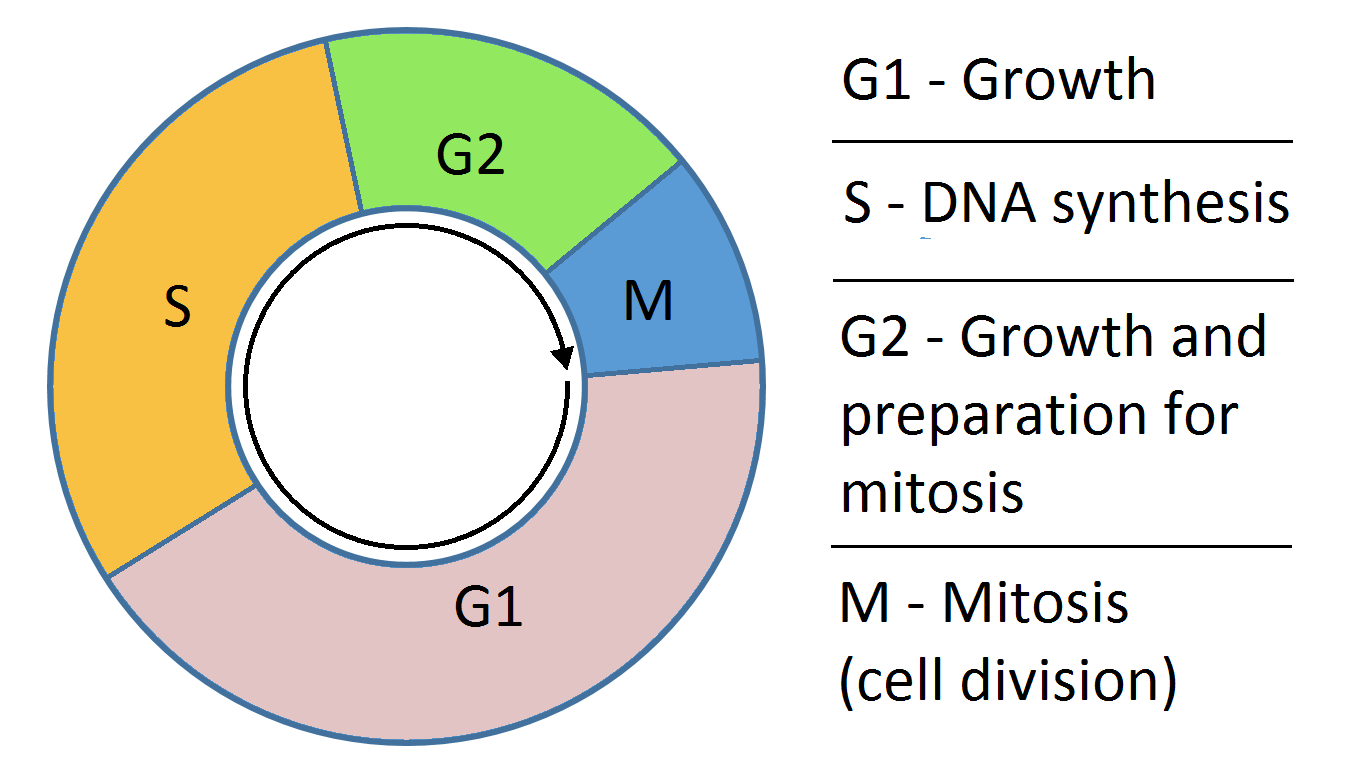The first topic introduces the basis of life, and how life is maintained through cells. The topic lays the foundation of biology, and introduces how the first cells came to be, what cells are made of, how cells replicate, and how material is transferred in and out of the cell. It is a relatively short topic, but it is important for future topics. Membrane transport and the different organelles of the cell are especially important. I would say that the most challenging parts of this topic are the stages of mitosis and membrane transport. The stages of mitosis can be a little hard to remember, and membrane transport can initially be difficult to grasp. I will try to clear up the parts which I found confusing further down the page, and there are a lot of good videos which I will link to in the end. It is otherwise a straight forwards topic without a lot of difficult to grasp concepts.
Points for revision:
-Prokaryotic and eukaryotic cells
-Volume and surface area regulation
- List of organelles and their functions
- Membrane structure and membrane transport
Prokaryotic and eukaryotic cells
Cells can be divided into procaryotic and eukaryotic cells. Prokaryotic cells, for example bacteria, do not have a nucleus separated by a double membrane. Instead, they have free floating genetic material in an area called the nucleoid. Additionally, prokaryotes have cell walls, and usually pili and flagella. Pili are hair-like projections used for attachment and communication between cells, and flagella are “tails” that allows the cell to move. Procaryotic cells reproduce by binary fission instead of sexual reproduction.
Eukaryotic cells do have a nucleus and can be divided into plant cells and animal cells. Eukaryotic cells are generally bigger and more complex than prokaryotic cells and divide by mitosis. Eukaryotic cells can differentiate into a variety of cells each with its specialized function. Stem cells are un-differentiated cells that retain their ability to differentiate and reproduce. They are a central field of research because of their regenerative properties.
Volume and surface area regulation
All cells need to balance the ratio between their surface area and volume. Increased volume increases the rate of chemical processes within the cell, while increased surface area increases the rate at which materials can be transported in and out of the cell. However, since the volume increases by a faster rate than the surface area does when the cell grows, the chemical reactions reach a level where it surpasses the cells ability to eject waste material. This may cause the cell to explode. Many cells and tissues have solved this issue by having many folds, thus increasing its surface area while maintaining a low volume.
List of organelles and their functions:
Here is a list of important organelles, and a brief explanation of each. Some organelles will be explained with more detail in future topics.
Nucleus and nucleolus
The nucleus is the control center of the cell, and it is in the nucleus where the genetic material is found. It is isolated by its own nuclear envelope with nuclear pores to make it possible to transport material in and out. The genetic material is in the form of chromatin until the cell is ready to undergo mitosis. The nucleolus is a denser area of the nucleus, and its main job is to produce and assemble ribosomes, which are then transported to the cytoplasm through nuclear pores. Only eukaryotic cells have a nucleus.
Cytoplasm
The cytoplasm is everything within a cell membrane with the exception of the nucleus. It is mainly comprised of cytosol, which is a gel like fluid, and the different organelles. It is in the cytoplasm where most of the chemical processes within a cell takes place.
Cell wall
The cell wall is a tough structure built from cellulose, and it provides structure and rigidity to the cell. Cell walls are found in most procaryotes and plant cells but are not found in animal cells.
Mitochondria
Mitochondria are the powerhouses of the cell. It is in the mitochondria where cellular respiration takes place. Mitochondria resemble procaryotic cells in that they are separated by a double membrane and have their own genetic material. The outer membrane is smooth, but the inner membrane is folded into cristae. The cristae greatly increase the surface are of the mitochondrion. Inside the inner membrane is a fluid called the matrix. The space between the two membranes is called the inner membrane space.
Chloroplast
Chloroplast are only found in plant cells and algae and serves as sites for photosynthesis. Chloroplasts contain among other things, chlorophyll, which is a green pigment specialized for absorbing sunlight. It is chlorophyll that gives plants its green color. Chloroplasts, just like mitochondria, has a double membrane and its own DNA. The space within the inner membrane is filled with a fluid called stroma. The stroma has stacks of thylakoids called grana. Thylakoids can be visualized as a coin, and grana as a stack of coins.

Ribosomes
Ribosomes are organelles made of ribosomal RNA in the nucleolus. They can be found floating around in the cytosol, or in the rough endoplasmic reticulum. Ribosomes are the protein factories of the cell. They read off the genetic code and assembles proteins accordingly. Ribosomes floating in the cytosol usually produce proteins for within the cell, while ribosomes in the rough endoplasmic reticulum produces proteins for outside the cell.
Lysosomes
Lysosomes are vesicles filled with enzymes, and they act as the waste disposal centers of the cell. When lysosomes encounter material that is not used for anything, it engulfs it and digests it chemically.
Vacuoles
Vacuoles can be found in both animal and plant cells, although plant cells have a much bigger central vacuole. Vacuoles functions as storage units within the cell, storing water and unwanted waste materials. The central vacuole in plant cells exerts a pressure on the cell wall that makes the plant stand up more rigid.
Endoplasmic reticulum and golgi body
The endoplasmic reticulum (ER) is divided into two segments, the rough ER, and the smooth ER. The endoplasmic reticulum is a system of flattened membrane sacs acting as a factory and canal system. The rough ER has ribosomes attached to it which produces proteins through protein synthesis, and the proteins are then transferred by vesicles into the golgi body. The golgi body acts as a packaging system, preparing the proteins to leave the cells through endocytosis. The smooth ER does not have any ribosomes attached but is important in detoxication and lipid and steroid production.
Centrioles and centrosomes
Centrioles make up structures called centrosomes, which are important in cell division since their main job is to produce microtubules to separate the chromosomes during cell division.
.jpg)
Membrane structure and membrane transport
Cell membranes are made up of a phospholipid bilayer, with integral and surface proteins attached to it. The hydrophobic tails of the phospholipid points inwards as it non-polar and therefore “water fearing”. The hydrophilic heads however point outwards as they are “water loving”. This in combination with a selection of membrane proteins makes a fluid membrane bilayer structure. The integral proteins usually have the nonpolar section in the middle of the membrane, and the polar section on either side of the membrane, creating a channel for polar substances to travel trough. Surface proteins or integral proteins usually plays a part in cell-to-cell interactions, functioning as anchoring points. Cholesterol is present in the membrane to regulate the fluidity, the more cholesterol, the more stiff the membrane becomes.

Membrane transport can be divided into two types, active and passive. Passive transport usually goes down a gradient of some kind, while active transport requires an expenditure of energy in the form of ATP. Passive transport consists of simple diffusion, facilitated diffusion, and osmosis, and active transport consists of protein pumps, endocytosis, and exocytosis.

Diffusion is the process where particles go from a high concentration to a low concentration, and facilitated diffusion is when proteins interact with substances to carry out diffusion. Examples of facilitated diffusion is when polar substances such as glucose diffuses in and out of membranes through membrane channels. Osmosis is when water travels through a semipermeable membrane. Semipermeable means that only some substances can pass through. If the concentration of for example salt is higher outside than inside the cell, water will travel out of the cell to even out the concentrations. A solution with higher concentration than the cell is called hypertonic, and the cell will shrink as water leaves. A solution with lower concentration is called hypotonic, and the cell will swell as water enters the cell. If the solution has the same concentration as the cell, it is called isotonic.

As mentioned, active transport requires expenditure of energy. One example of active membrane transport is a sodium potassium pump. A sodium potassium pump exports three sodium ions and imports two potassium ions. Becuase both ions are positively charged, a less positive charge inside the cell is said to create a net negative charge inside the membrane which creates an electrochemical gradient. Sodium potassium pumps are for example used in neurons to create a difference in charge inside and outside of the neuron which can be depolarized, thus sending an electrical signal. The pump works by changing shape when an ATP molecule binds to it. It is the energy released from spending ATP that changes the shape of the pump.

Endocytosis and exocytosis are the processes used to transport macromolecules in and out of cells and are considered active transport since they require an expenditure of ATP. Endocytosis and exocytosis work on the same principles, but endocytosis transfers material into the cell, while exocytosis transports material out of the cell. Exocytosis happens when a vesicle from inside the cell containing disposable material fuses with the cell membrane, thus releasing its content out of the cell. Endocytosis happens in the opposite fashion, with a vesicle from the outside fusing with the membrane, thus releasing its content inside the cell. A vesicle is essentially a phospholipid bilayer bubble. The fluidity of phospholipid membranes is the reason why vesicles can fuse together with membranes.
I would recommend watching this animation: https://www.youtube.com/watch?v=aoTCT1a-G3w
The cell cycle
The cell cycle is comprised of a growth phase (G1), a synthesis phase (S1), another growth phase (G2), mitosis, and cytokinesis. The growth phases are self-explanatory in that the cells grows as it gains material. The S phase is when the genetic material is duplicated and prepares the cell for mitosis. G1, S, and G2 together make up the interphase, which is when the cell carries out most of its functions.

Mitosis and cytokinesis
Mitosis is divided into 4 stages. Prophase, metaphase, anaphase, and telophase. I use the acronym PMAT to remember it. During prophase, DNA starts to supercoil and condense into chromosomes. The nuclear membrane disintegrates, and the mitotic spindles forms from the centrosome. The chromosomes themselves are now in pairs of sister chromatids connected by a centromere. In metaphase, the chromosomes are lined up in the center by the spindle connected to the centromere in an area called the kinetochore, preparing the cell for anaphase, where the spindles shortens, separating the sister chromatids and pulling them to opposite poles. The last phase of mitosis is called telophase, and here the nuclear membrane reforms, and the cell is elongated to prepare for cytokinesis.

Cytokinesis is when the cell completely separates into two new cells. This happens differently in plant and animal cells. In animal cells, microfilaments make a contractile ring around the elongated cell, thus separating the cell into two parts. In plant cells, a new cell wall forms between the two cells, thus dividing them.
Helpful videos:
Cell structure: https://www.youtube.com/watch?v=vwAJ8ByQH2U
Cell cycle: https://www.youtube.com/watch?v=U5vAO_f2LDQ
Interphase: https://www.youtube.com/watch?v=VXLSTd_dlKg
Mitosis: https://www.youtube.com/watch?v=L0k-enzoeOM
Membrane structure and transport: https://www.youtube.com/watch?v=dPKvHrD1eS4
I experienced this topic as a quick read because I knew most of the material beforehand. However, I still found it interesting, and I think the book did a good job at explaining the content. I liked the diagrams and pictures in this book a lot.